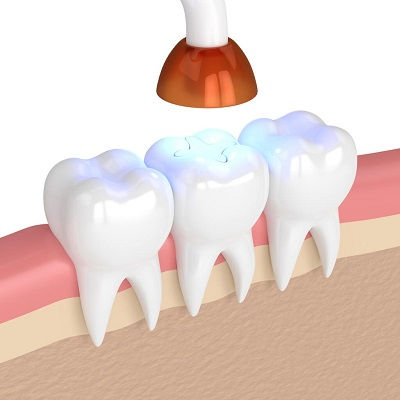Comparing Tooth Filling Procedures in Dubai: What’s the Difference?
- anayageorge275
- Aug 19, 2024
- 4 min read
Tooth fillings are a common dental procedure used to restore teeth affected by decay or damage. Dental Tooth Filling In Dubai, a range of filling materials and techniques are available, each with its own advantages and considerations. Understanding the differences between these options can help you make an informed decision about the best treatment for your needs. Here’s a comprehensive comparison of the most common tooth filling procedures offered in Dubai.
1. Amalgam Fillings:
Description: Amalgam fillings are made from a mixture of metals, including silver, mercury, tin, and copper. They have been used for over a century and are known for their durability.
Advantages:
Durability: Amalgam fillings are highly durable and can withstand significant chewing pressure, making them ideal for back teeth.
Cost-Effective: Generally less expensive than other types of fillings.
Longevity: They often last 10-15 years or more with proper care.
Disadvantages:
Aesthetics: Amalgam fillings are silver-colored and can be noticeable in visible areas.
Mercury Content: While the mercury in amalgam is considered safe by most dental and health organizations, some patients prefer to avoid mercury-containing materials.
Ideal For: Back teeth (molars) where durability and strength are prioritized over appearance.
2. Composite Resin Fillings:
Description: Composite resin fillings are made from a tooth-colored plastic material that can be shaded to match the natural color of your teeth.
Advantages:
Aesthetics: Composite fillings blend seamlessly with natural tooth color, making them a popular choice for visible areas.
Bonding: The resin bonds directly to the tooth, which can provide additional support and strength.
Versatility: Suitable for both small and medium-sized fillings.
Disadvantages:
Durability: Not as durable as amalgam fillings, particularly in high-pressure areas, and may wear out sooner.
Cost: Generally more expensive than amalgam fillings.
Ideal For: Front teeth or any visible areas where appearance is a key concern.
3. Glass Ionomer Fillings:
Description: Glass ionomer fillings are made from a mixture of glass and organic acids. They release fluoride, which can help protect the tooth from further decay.
Advantages:
Fluoride Release: Helps in the prevention of further decay around the filling.
Aesthetics: Can be matched to the color of the tooth, though they are generally less aesthetic than composite resins.
Bonding: Bonds well to the tooth structure.
Disadvantages:
Durability: Not as strong or long-lasting as amalgam or composite fillings, especially in areas subjected to heavy chewing.
Wear and Tear: Can wear down more quickly than other filling types.
Ideal For: Areas where fluoride release is beneficial, or for fillings in locations that do not experience heavy chewing pressure.

4. Resin Ionomer Fillings:
Description: Resin ionomer fillings are similar to glass ionomer fillings but contain additional resins that improve their strength and esthetics.
Advantages:
Aesthetics: Better esthetic results than traditional glass ionomer fillings.
Fluoride Release: Provides fluoride release to help protect the tooth.
Bonding: Good adhesion to the tooth structure.
Disadvantages:
Durability: Still not as durable as amalgam or composite fillings.
Cost: Can be more expensive than glass ionomer fillings.
Ideal For: Areas that benefit from fluoride release but also require a more aesthetically pleasing option.
5. Ceramic Fillings:
Description: Ceramic fillings, often made from porcelain, are designed to closely match the color of natural teeth and are highly resistant to staining.
Advantages:
Aesthetics: Highly aesthetic and can blend perfectly with the natural tooth.
Durability: More durable and resistant to wear than composite resins.
Stain Resistance: Less likely to stain compared to other filling materials.
Disadvantages:
Cost: Generally more expensive than other filling types.
Tooth Preparation: Requires more tooth structure removal compared to other materials.
Ideal For: Visible teeth where aesthetics and durability are both important considerations.
6. Gold Fillings:
Description: Gold fillings are made from a gold alloy and are known for their durability and longevity.
Advantages:
Durability: Extremely durable and can last 15-20 years or more.
Biocompatibility: Gold is highly biocompatible, meaning it is less likely to cause allergic reactions.
Strength: Ideal for areas that experience heavy chewing pressure.
Disadvantages:
Cost: One of the most expensive filling options.
Aesthetics: Gold fillings are highly noticeable, which may be undesirable for some patients.
Ideal For: Back teeth where durability and strength are required, and for patients who do not mind the appearance of gold.
FAQs:
1. How do I choose the best filling material for my needs?
Consider factors such as the location of the filling (front vs. back teeth), your budget, aesthetic preferences, and any specific dental health needs. Your dentist will help you select the most suitable material based on these factors.
2. Are there any health risks associated with different filling materials?
Most filling materials used in Dubai are considered safe. However, if you have concerns about mercury in amalgam or other materials, discuss these with your dentist to find an option that meets your needs.
3. How long do different types of fillings last?
Amalgam fillings can last 10-15 years or more, composite resin fillings typically last 5-7 years, and ceramic and gold fillings can last 15-20 years. Glass and resin ionomer fillings generally have a shorter lifespan.
4. Can I replace an old filling with a different material?
Yes, you can replace an old filling with a different material if desired. Your dentist will remove the old filling and place a new one based on your preferences and dental needs.
5. How much do different filling materials cost?
Costs vary depending on the material and the dentist's fees. Generally, amalgam fillings are the least expensive, while ceramic and gold fillings are the most costly.


Comments